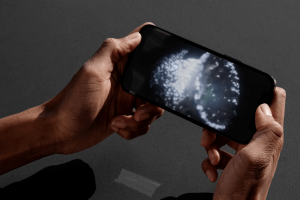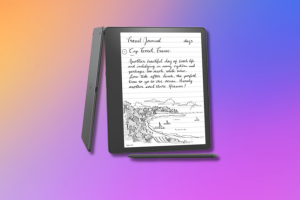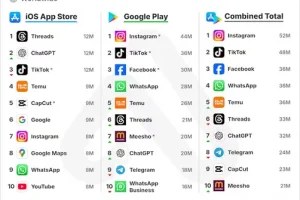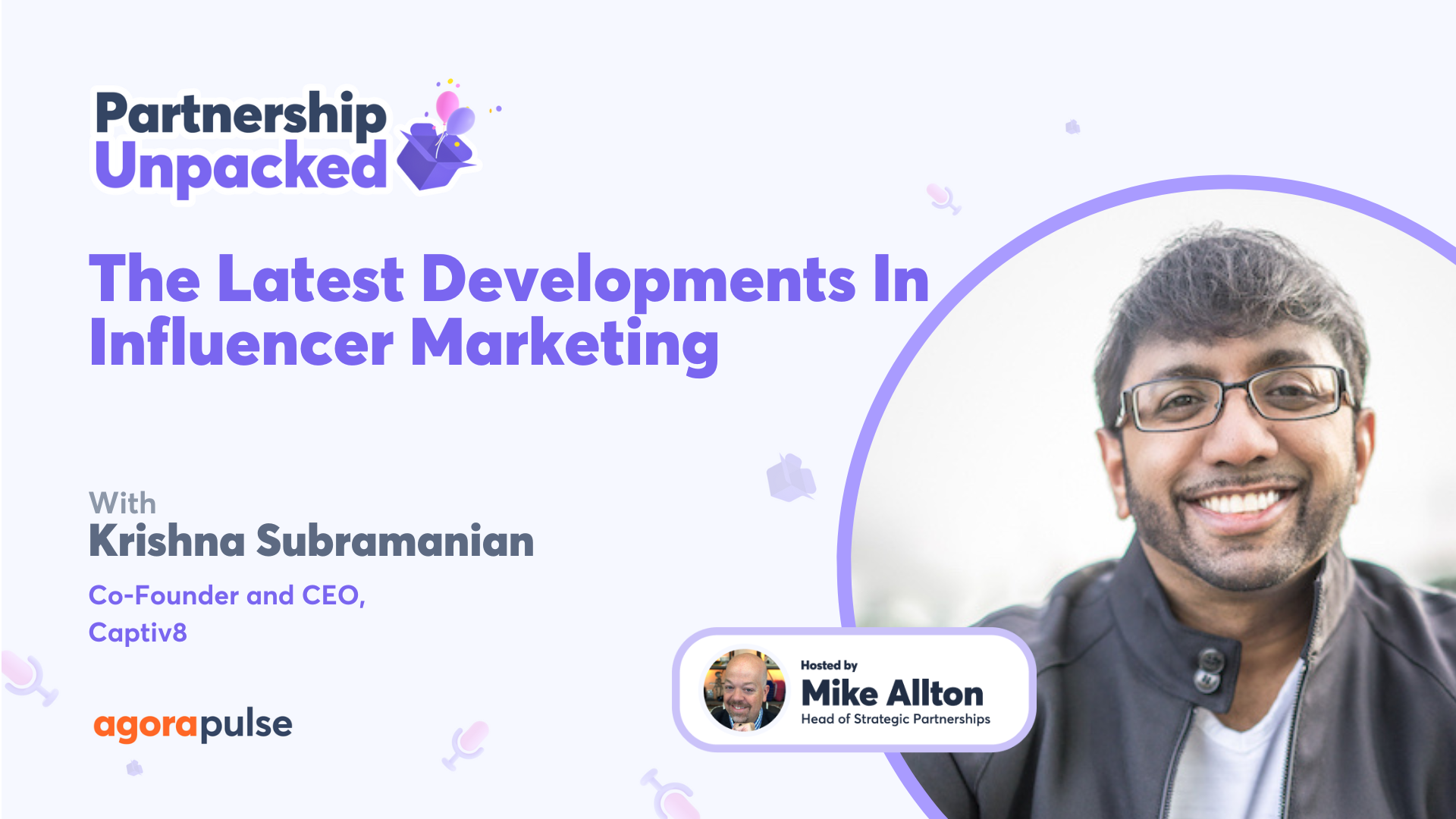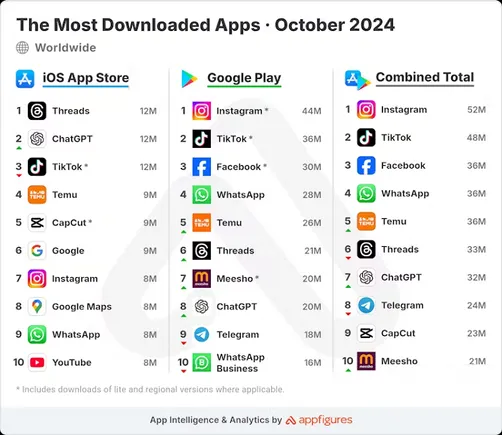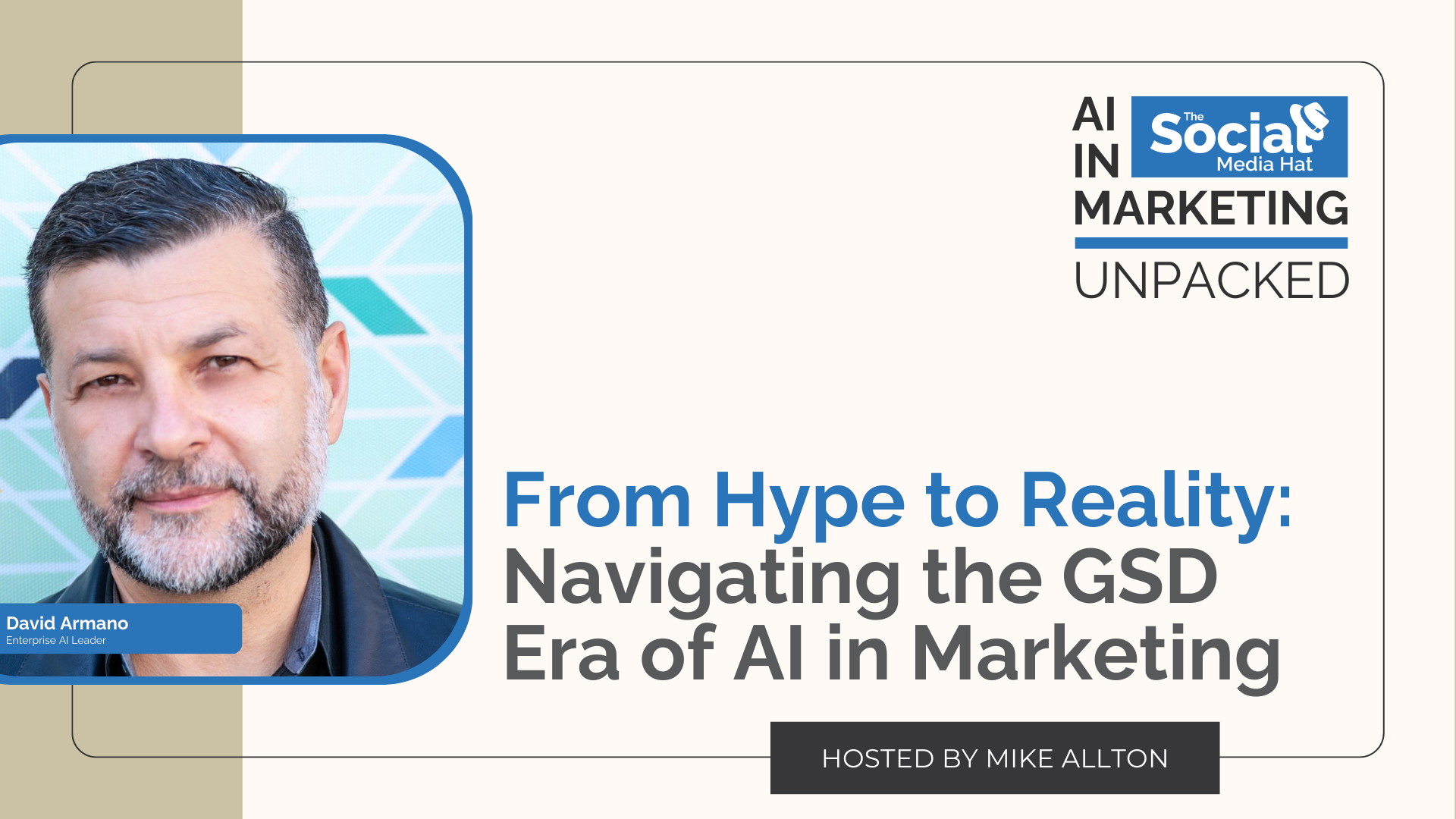I’ve been blogging about influencer marketing, social media and the various networks since 2011, and have had a front-row seat as change after change change was pushed upon us as marketers and we had to scramble to learn and adapt.
New social networks cropping up. Old social networks shutting down.
New best practices to learn. Old best practices to forget.
And throughout, it’s been even more complicated for influencers and the brands who want to leverage them, as they seek to navigate these changes and more.
So what are the latest developments in influencer marketing?
That’s what we’re covering in today’s episode of Partnership Unpacked.
Welcome back to Partnership Unpacked, where I selfishly use this time to pick the brains of experts at strategic partnerships, channel programs, affiliates, influencer marketing, and relationship building… oh, and you get to learn too! Subscribe to learn how you can amplify your growth strategy – with a solid takeaway every episode from partnership experts in the industry.
Listen… if you feel overwhelmed by all of the changes in marketing happening today, that’s OK. We all feel that way. From AI to GA4 to European lawmaker’s nonstop assault on technology, there’s so much going on, it can be difficult to have a sense for what direction we should be headed with our marketing initiatives
Particularly with influencer marketing today. Hollywood strikes, new networks like Threads, and emerging technology have influencers and brands scratching their heads.
That’s exactly what Krishna Subramanian is going to talk to us about.
While Agorapulse is embedded in the social media marketing space, top-ranked influencer marketing tool Capitiv8 is similarly positioned in the influencer marketing space, led by co-founder and CEO, Krishna. His is a trusted voice in the marketing industry due to his years of experience leading Captiv8 and, before that, Mobclix and BlueLithium. He’s published with Forbes, AdAge and AdWeek, appeared as a guest commentator on BloombergWest, CNBC and FoxNews, and is a frequent speaker at conferences such as SXSW, OMMA and AdTech.
Partnership Unpacked host Mike Allton talked to Krishna Subramanian about:
♉️ How the strikes in Hollywood are impacting influencers today
♉️ The impact, and opportunities, the new Threads network offers
♉️ Why micro influencers are on the rise
Subscribe to the show calendar: agorapulse.com/calendar
Learn more about Krishna Subramanian
Resources & Brands mentioned in this episode
Full Notes & Transcript:
(Lightly edited)
The Latest Developments In Influencer Marketing with Krishna Subramanian
[00:00:00] Mike Allton: I’ve been blogging about social media and the various networks since 2011, and I’ve had a front row seat as change after change, after change was pushed upon us as marketers and we had to scramble to learn and adapt new social networks cropping up old social networks, shutting down new best practices to learn old best practices to forget.
And throughout it’s been even more complicated influencers and the brands who want to leverage them as they seek to navigate these changes and more. So what are the latest developments in influencer marketing? That’s what we’re covering in today’s episode of Partnership Unpacked.
This is Partnership unpacked your Go-to Guide to Growing Your Business through partnerships quickly. I’m your host, Mike Galton, that each episode unpacks the winning strategies and latest trends from influencer marketing to brand partnerships and ideas that you can apply to your own business to grow.
Exponentially. And now the rest of today’s episode, welcome back to Partnership Unpacked, where I selfishly use this time to pick the brains of experts at strategic partnerships, channel programs, affiliates, influence and marketing and relationship building. Oh, and you get to learn, too. Subscribe to learn how you growth strategy with a episode.
If you feel overwhelmed by all the changes in marketing happening today, that’s okay. We all feel that way. From AI to GA four to European lawmakers nonstop assault on technology, there’s so much going on. It can be difficult to have a sense for what direction we should be headed with our own marketing initiatives.
Particularly with influencer marketing today, Hollywood strikes new networks like threads and emerging technology have influencers and brands scratching their heads. That’s exactly what Krishna Subramanian is gonna talk to us about. While Agora Pulse is embedded in the social media marketing space. Top ranked influencer marketing Tool Captiv8 is similarly positioned in the influencer marketing space led by co-founder and C E O Krishna.
His is a trusted voice in the marketing industry due to his years of experience leading Captiv8, and before that, mob Clicks and Blue Lithium. He’s published with Forbes Ad Agent Adweek appeared as a guest commentator on Bloomberg, west C, cnbc, and Fox News, and is a frequent speaker at conferences such as South by Southwest, hey Krishna.
[00:02:35] Krishna Subramanian: Thank you. Thanks, Mike. Glad to be here. [00:02:38] Mike Allton: So glad to have you. Let’s start by talking about some background information about you. I’d love to know why you co-founded Captiv8, and how your company helps influencers today. [00:02:49] Krishna Subramanian: My background’s been in the digital media and marketing space for quite some time, but you know, I’d say maybe about seven or eight years ago, just got really interested in what was happening in social, looking at how millennials were changing the way they consume content, spending a lot less time in front of the TV and more time in.
Different social platforms like YouTube, snap, things of that sort. And our thought was really, you know, as brands change the way, you know, as millennials change the way they consume content, brands are gonna change the way they engage with millennials because you can’t really expect a millennial to click on a banner ad buy something.
So that was sort of the mindset of. You know, maybe seven or eight years ago when we started Captiv8 is really trying to figure out why do things go viral? Can we predict, you know, the velocity of content when it’s being shared on platforms like Instagram? And we started off as a social listening platform specifically on Instagram.
[00:03:38] Mike Allton: Well, that’s fascinating. Now, in a lot of our past episodes, we’ve talked about the difference between B two B influencers and B two C influencers, your platform captivate. Does it skew one way or the other, or does it pretty much handle all kinds of influencers equally? [00:03:51] Krishna Subramanian: We handle influencers across the board.
So we’ve got over 15 million influencers on the platform. So you’ve got like a wide range of your traditional celebrities and tier one digital talent all the way down to micro influencers.
[00:04:03] Mike Allton: And as I understand it, it’s a complete platform or a solution or a dashboard for handling that entire influencer experience, right?
From finding them to setting up campaigns to actually. Paying them. Is that right?
[00:04:16] Krishna Subramanian: Yeah, yeah, you’re correct. So the way we think about it is really being an end-to-end platform for brands. And I think you can think of it as, as starting out with a marketing objective as a brand. It might be tied to, let’s say, branding and awareness, or it might be tied to driving sales or driving app download.
So the first thing you do is you go out and you select that marketing objective, and then the platform will help you find creators. So you. One, you can have our AI suggest which creators might be the best ones for your brand and for your marketing objective. Or you could go out and use over 50 different filters to identify creators by things like brand, affinity, age, gender, household income, location, brand affinity.
And then you go through the next steps of communicating with them, contract with contracting with them, approving their content, uh, paying them, measuring all of the, the r o i and results from that as.
[00:05:07] Mike Allton: It’s so fascinating to me. I do all of our influencer marketing at Agorapulse, but I don’t use a tool like that because I just have a few dozen very specific influencers in the space that I work with on a long-term basis.
But I love the idea of brands using a tool like yours, particularly that those AI enhancements to find great influencers in that space. I know that’s the number one challenge that brands have expressed to me, the how do influencer. I wanna shift gears a little bit because I wanna touch on an article that you contributed to for the New York Times, and for those of you listening, we’ll put the link to that article in the show notes.
But it was talking about the dilemma that influencers today face when offered what most might consider a bit of a dream opportunity to promote a new film that they might potentially. Wanna talk about on social media? Can you explain why that’s an issue today and what you recommend influencers consider doing?
[00:06:01] Krishna Subramanian: The article is essentially was highlighting a lot of the challenges that influencers and brands were facing due to the Hollywood strike and the issues with sag. And so from a influencer standpoint, the rules that SAG essentially put out was not being able to, or not being able to work or support any struck.
Companies or brands. And so ultimately this really works for let’s say studios and films and TV shows that creators would typically promote. Um, and it could even be, let’s say like, you know, music awards or any sort of red carpet where these studios would actually wanna partner with creators to drive more awareness and attention, drive people into actually watching the show or watching the movie.
And so there’s essentially a rule that’s keeping influencers and creators space and. You know, even if you’re not a part of SAG today, but you wanna be a part of SAG in the future, you should not support or endorse any of these companies. And I think it puts creators in a tough place because, you know, sure you want that income today, but you don’t wanna add a risk of what might happen in the future.
And you know, that’s sort of the dilemma that that creators have been dealing with over the last, you know, couple months.
[00:07:12] Mike Allton: Right. I have not been in that position, but I can only imagine if one of my, you know, favorite franchises or studios came to me and wanted me to promote, you know, the latest Marvel movie or something like that.
I would be heartbroken to have to say no. But would you say that’s basically your advice at this point, is take a pass if you have dreams of one day being an actor or actress and joining sag.
[00:07:31] Krishna Subramanian: Yeah, I definitely would say pass on it. And even if you don’t have a dream of being a part of it, it’s a really tricky situation, right?
’cause you wanna support your other peers and you know, these days like cancel culture’s so big you don’t want to accidentally, you know, do something for a small amount and they get canceled in that process.
[00:07:50] Mike Allton: That is a terrific point. I know the article quoted at least one creator who had gone ahead and done some promotion and hadn’t seen any backlash or, or or negative feedback at that time.
But you’re right, that’s always a possibility. Now, another trend in development that I wanna talk with you about is threads. How would you characterize meta’s new social network in terms of, let’s say, influencer marketing opportunities?
[00:08:16] Krishna Subramanian: I think two things. I think one, from a brand perspective, It’s really important to just stay aware of all the different social platforms and channels that are out there, trying to identify where there’s going to be significant traction and just keeping a close eye on it and see what that opportunity looks like.
You know, so in the past recent, we’ve seen like BeReal for example, that maybe had like a false start. And if you look at threads, I think it, the biggest difference here is, is meta went out and did something that we’ve never seen anywhere before. Is, is being able to move your entire audience over from Instagram to this new platform with a click of a button.
And so I think it changes the way that a lot of brands started to think about that, the platform, because one of the biggest challenges. Creators or brands have, anytime a new social platform comes out is building that community on that platform. But if you have that community instantly now it changes the way you approach that.
’cause your audience is already there. You know, I think what we’ve seen is we’ve seen a lot of brands that are already present on threads where they have started to engage with their audience there in maybe a different way than they typically would on Instagram. And so it’s been exciting to see that sort of progress.
[00:09:31] Mike Allton: I’m glad you mentioned some of the other social networks like Be Real, which I said the outset. I’ve been blocking about social media since 2011. I have watched so many networks come and go. I’ve watched the hype, I’ve watched the Sizzle, and to me threads feels. Different. It feels more like a TikTok or a WhatsApp where it’s new now, but it has that kind of staying power, whereas Be Real was very trendy and it’s very much hyped, similar to many other social networks that have come out in the past.
So I often advise. My clients to sit back away. But you mentioned brands and influencers are already busy on threads, which is awesome. How have you seen them leveraging threads today, and how do you see that changing the future, knowing that we’ve got a whole bunch of new features and tools that are slated to be released.
[00:10:20] Krishna Subramanian: The big thing that we’ve seen on threads, I think is really looking at creators, are looking at a way to looking at threads as a way to engage their community, and so being able to have conversations with their community and their audience in a way that they typically couldn’t do on Instagram. I think, you know, also looking at it and saying, maybe this is an opportunity to do things that are, let’s say, like behind the scenes, someone like Zach King, you know, uses.
He’s predominantly a video creator, but uses threads as a B T S behind his content. And I think those are two ways that are definitely successful.
[00:10:54] Mike Allton: I love that you mentioned Zack’s, good friend of mine. I’ll put a link to Zack’s profiles in the show notes. ’cause if you guys aren’t following Z King and being entertained by his amazing video wizardry, there’s a rabbit hole for you that I’m gonna give you.
But you mentioned Instagram. We’re talking about threads. These are networks where traditionally it’s really hard to measure success. How are you seeing them measure r o i from social networks like threads? And what advice do you have for brands, influencers alike when it comes to r o?
[00:11:22] Krishna Subramanian: I think it’s super early for brands to identify.
You know, r o I on threads. I think right now the biggest piece is just gonna be the conversation and the sentiment that they’re able to get from the, that conversation. And you know, maybe looking at the level of engagement that they have in those conversations on threads versus on. You know, x slash Twitter versus Facebook versus, you know, YouTube or Instagram’s comment sections.
You know, I think what’s interesting is the audience demographic on threads is gonna be very different from that audience demographic on TikTok or on Facebook. And if your brand really resonates. With that specific demographic. I think it becomes a critical part in having a voice with your community there.
I think from a creator standpoint, it gives you the opportunity to sort of showcase a different side of you as a creator. So if you’re always focused on, you know, photo and video content, but you might be, you know, great on, on Twitter or x, you know, maybe now all of a sudden your existing audience has that opportunity to go out and see that side of you that they might not have seen before.
[00:12:31] Mike Allton: That’s such a great point. And let me just say, Elon, you suck for making us say Twitter X over and over and over again. Hate you for that. But hey, we’re talking with Krishna, c e o, captivate, about influencer marketing, how to measure the r o i from your campaigns, and here to talk to us about how to measure your r o i from social media marketing overall is Darryl cm o here? [00:12:54] Darryl Praill: It’s the arc of triumph. Can you imagine if you’re in charge, if you’re the C M O? Of marketing Paris, what are your main channels? Wow, there’s. The arc of Triumph. There’s the Eiffel Tower, there’s the Louvre. Those are your channels you’re gonna use to drive tourism dollars in. Okay, now, but you’re not the C M O of pairs.
In fact, you’re the C M O of your company product service. So what are your main channels? Well, I’m gonna guess there are things like pay per click, maybe trade shows, events. Maybe content. Those are all pretty predictable, right? Let me ask you this question. Are you treating social media as a main channel?
By the way, only 1.8% of you today measure social media and can prove an r o i in that investment. HubSpot and Gartner say Social media is the number one channel to invest in this year. Are you doing it? If not, I can tell you why. You’re not doing it because you don’t have the tools, you don’t have the mentality, and that’s okay.
We’ve got you covered. You change the mentality. We’ll give you the tool Gore Pulse tracks all the r o I for you. One place to manage all your social media activity, your number one channel, change your success. Treat social media as channel one C m O to another. My name is Darrell. I’m with Agora Pulse.
I’ll talk to you soon.
[00:14:12] Mike Allton: All right, Krishna, one of my favorite developments in influencer marketing, particularly in the B two B space, is the rise of the micro influencer. What role do you see emerging platforms like threads or even let’s say, evolving platforms like X playing with micro influencers? [00:14:27] Krishna Subramanian: Micro influencers, I think they’re folks that have been around for, you know, since the start of all these social platforms.
But I think the area that we’ve really started to, you know, sort of see them really succeed now is just as the emergence of new platforms come out, but also the emergence of new marketing techniques. So, you know, historically the biggest advertisers that we’ve always really focused on, or the marketing objectives that advertisers are focused on have been.
Awareness and bringing dollars over from TV into the influencer space. What we’ve been able to see over the last few years is this surge of performance dollars or direct response dollars where brands are really focused on driving sales or driving installs or you know, some sort of action. Or outcome and the micro influencers are, are leading the pack in that category.
You know, these are creators that have anywhere from, let’s say 15,000 followers to maybe 150 to 200,000 followers, and they have a very niche audience that’s highly engaged and it’s very action oriented. I’d say some of the top sellers that we see on our affiliate platform have maybe 30,000 followers and they’re driving 500, you know, thousand dollars in sales a month, which is absolutely insane.
I remember the first time I saw it, I was like, whoa, is this real? Is there any fraud that’s happening? Um, how long is it gonna last? And it’s just completely like ongoing. And I think there’s this huge opportunity to really tap into micro influencers and really leverage. For that highly engaged audience.
When you think about other categories, let’s say like maybe data scientists or physicians or things of that sort, having, you know, 5,000 or or 10,000 followers on a platform like, you know, threads or X, it’s gonna be highly valuable for an advertiser.
[00:16:13] Mike Allton: That’s fascinating and, and we kind of talked about this at the outset, this challenge that businesses have to find micro influencers.
I often teach brands how to build their own influencer marketing programs. And we talk about how macro influencers, mega influencers, they’re relatively easy ’cause you already know who they are. They’re top of mind, you’re already follow them on social media. What advice do you have for brands in the B2 when finding, working with micro influencers?
[00:16:40] Krishna Subramanian: I’d say the hard part is finding scale in the micro influencer space, and I think that’s the most challenging thing is when you know this particular type of influencer is someone that’s going to really work with your audience. How do you find a hundred of those people? And so I think part of the things that you should really look for is just how engaged is that audience within that creator.
So how engaged is the audience in general? What is the sentiment of those conversations? What type of conversations are they having with that audience? And then I think going out and looking for specific audience data sets that are going to be valuable for you. So if you’re trying to, you know, drive sales or drive it engagement or something of that sort, it’s really looking at those data points and leading with those data points to, to sort of say, here’s sort of what I’m looking for, right?
I’m looking for someone that is used to driving sales in the fashion and retail category for women, or I’m looking for someone that is used to driving conversation within. The physician community around cardiology and start to sort of see who’s within that community of conversations and build it out from there.
[00:17:49] Mike Allton: That’s such an astute clarification that the challenge isn’t to find one micro influencer that’s great for the brand. The challenge is to then find a hundred more just like them so that you can scale the program. Am I right in assuming that that’s something Captiv8 can help with? [00:18:04] Krishna Subramanian: Yeah, Captiv8 can definitely help with that.
We have a discovery engine on Captiv8, very similar to like a Google for finding influencers. So you would come in and you could select the platforms, you could select the keywords, the, you know, the content topics, personality archetypes, and um, and it’ll give you a resulting set of creators set to sort of work with.
[00:18:24] Mike Allton: That’s awesome, and I’m doing this to plug the tool. I’m genuinely interested because I have not actually gotten to use some of these large, scalable platforms, so I appreciate you sharing that. I just got one more question for you, and it’s my favorite question to ask because I always love the nuance of everyone’s different answers, but here’s question, how important. [00:18:47] Krishna Subramanian: Great question. I think relationships, you know, have definitely played a critical part in where my career has gone and the success that I think I’ve had in it. I’ll talk about a few different categories and then maybe zoom into one. I think relationships definitely help open new doors, right? They create a lot of opportunities for, for networking introductions coming from those relationships are super important.
Career progression and where I think I might want my career to go. You know, why someone in my space sees, you know, the same sort of white space that I might not be seeing. I think thinking about. You know, just like personal support and resilience. Maybe even just thinking about like conflict resolution and, and things of that sort.
But one of the areas that I think has been probably the most helpful is, is really around, you know, like mentorship and guidance. And I think it’s, sure. You know, like mentors can I. Provide guidance and advice and feedback. But I think that the biggest thing is, is just being able to give you perspective and having that board of advisors, that personal board of advisors that gives you perspective is super important.
And I think they should be from all walks of life. It shouldn’t, you know, your board of advisors shouldn’t. Be the same person that you are. They shouldn’t be doing the same thing as as you. Right? And because otherwise you’re gonna get the same perspective that you already have. And, and I think that’s probably one of the most exciting things that I like to think about.
And, you know, a framework that I love to sort of instill in in people that I’m helping mentor.
[00:20:15] Mike Allton: I love that you mentioned personal board of advisors. It’s a concept I’ve written about. We haven’t talked about it on this show specifically, and I can envision doing an entire episode just about the importance of having that kind of a personal board of advisors, a personal mastermind group, different ways to frame it and categorize it, but such a critical piece of advice.
I love that you shared that. Thank you. You’ve been amazing. This has been a terrific interview. Krishna, can you share with folks where to follow you and where to go to learn more about you and captivate?
[00:20:45] Krishna Subramanian: Awesome. Yeah. So to learn more about Captiv8, we’re at captivate.com, C A P T I V, the number eight com.
You can find me pretty much on any social platform with the handle KS u b.
[00:21:00] Mike Allton: Fantastic. We will have all those links and more in the show notes, and that’s all we’ve got for today, friends. But thank you so much for listening. If you enjoyed today’s show, please leave us a rating and a review on Apple. We’d love to know what you think.
Until next time, see you. Thank you for listening to another episode of Partnership Unpacked, hosted by Mike Alton, empowered by Agorapulse, the number one rated social media management solution. Which you can learn more about@agorapulse.com. If you enjoyed this episode, please subscribe on your favorite podcast player.
Be sure to leave us a review. Your feedback is important to us. And if you wanna be part of our audience during live broadcasts, take a look at our calendar. At Agora pulse.com/calendar Until next time.
